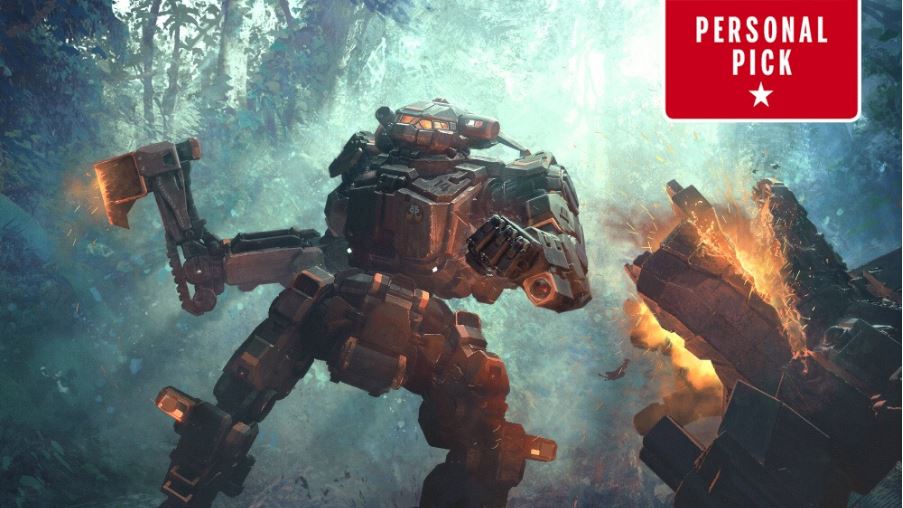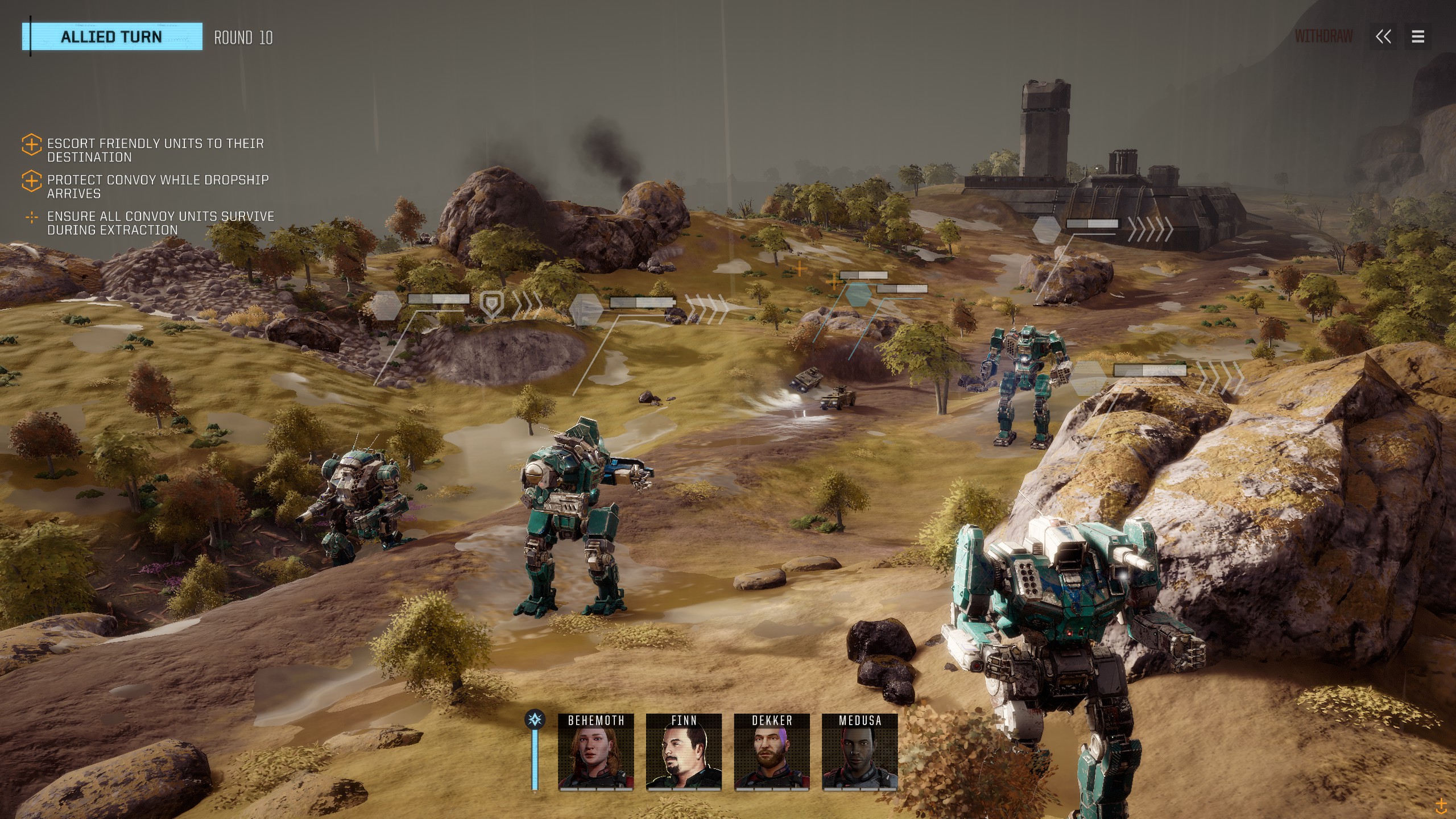How BattleTech mixed defeat with victory
RPG house Harebrained Schemes produced one of the best strategy games of 2018.


Accompanying our team-selected Game of the Year awards for 2018, individual members of the PC Gamer team each discussed one of their favorite games from 2018.
BattleTech's battlemechs don't have one hitpoint bar, they have 19. Armor values for the center torso, left torso, right torso, right arm, left arm, head, left leg, right leg, and rear torso segments are all individually tracked. When you eat through one of these layers of metal padding, it exposes yet another body segment-specific HP bar for that component's internal structure. When these bones are depleted, the corresponding body part cripples, ejects, or explodes.
I love the way that BattleTech's damage system makes it feel like a series of turn-based boxing matches where you're targeting your opponent's bruises while worrying about your own. You'll lob long-range missiles at your opponent, spreading pain evenly across three or four body segments; they'll reply with a PPC lightning bolt, walloping your left arm, which holds a valuable Large Laser. In response, you'll turn your right shoulder to face that opponent, shielding your body with a new stance like Fraser or Ali. It's the durability of mechs as videogame objects that creates time and space for these exchanges, and the way that Harebrained Schemes riffed on this 30-year-old combat system helped make it one of my favorite experiences of 2018.
The XCOM-style metagame that sits on top of BattleTech's combat is mostly about collecting guns and mechs. In order to build a 90-ton Highlander mech in your garage, you have to collect a handful of 'Highlander pieces' by defeating them on missions they happen to be present in. If you kill a Highlander or any other enemy mech 'too much' by annihilating its center torso, which holds the volatile reactor of your mech, you'll be awarded fewer mech pieces because the resulting explosion blew most of them up.
In summary: when you're hunting for a valuable mech, you have to figure out how to kill softly. You have to flank, think about turn order, and use your whole squad in order to set up a low-percentage headshot with an autocannon or other single-target weapon. It takes finesse and luck, but if you're too cautious in your execution you could incur expensive damage or lose a mechwarrior, defeating the purpose altogether. This risk-reward choice layers nicely with BattleTech's contract reward system, which forces you to pick between a balance of money, salvage parts, or faction reputation before the mission begins.
Individual components, too, have special value as BattleTech's procedural campaign ticks on. Rarer 'plus' variants of SRMs, lasers, or other guns are simply more efficient than their stock counterparts, contributing more damage, crit chance, or some other bonus, so you always want to equip them to maximize your mech builds. But these weapons are pretty easy to lose, and sometimes impossible to replace, a reflection of BattleTech's lore, where some technological knowledge has been lost after centuries of conflict.

Across 70 hours, the moments that stick in my mind most aren't acing all my objectives or my biggest kills, but missions where victory meant sacrificing an irreplaceable component. The first portion of story missions awards you a Highlander, outfitted with an ancient but powerful Gauss rifle and, perhaps more importantly, dual heatsinks. Dual heatsinks allow you to run hotter weapons, or more weapons total, on a mech, and they can't be purchased or found anywhere in the game outside of this moment. Part of the story of my ironman campaign became the gradual decline of my Highlander from all-star sniper to an average assault mech as it shed this legendary equipment piece by piece. Other, less legendary mechs experienced a similar path. If a mech accrued too much damage to be worth the repair cost, the best choice was often selling its ruined chassis for lunch money, or stripping it of whatever weapons and ammo remained and mothballing it in storage, where mechs don't take up valuable garage slots.
It's rare that a game does anything but make us feel more powerful as it progresses. I came to appreciate the way that failure and success mix in messy, uncomfortable ways in BattleTech, something that's only been matched by Darkest Dungeon and XCOM, among what I've played.
The biggest gaming news, reviews and hardware deals
Keep up to date with the most important stories and the best deals, as picked by the PC Gamer team.
Some players felt that the first add-on, Flashpoint, was light on new stuff for its $20 price tag, but it did provide a richer endgame, three new mechs, a career mode that's fun as a second playthrough, and 'short story' missions where you sometimes have to deploy back-to-back without an opportunity to repair. At the top of my wishlist is something that grants more personality to your mechwarriors themselves, who are lightly customizable but rely heavily on your own imagination to instill with identity.

Evan's a hardcore FPS enthusiast who joined PC Gamer in 2008. After an era spent publishing reviews, news, and cover features, he now oversees editorial operations for PC Gamer worldwide, including setting policy, training, and editing stories written by the wider team. His most-played FPSes are CS:GO, Team Fortress 2, Team Fortress Classic, Rainbow Six Siege, and Arma 2. His first multiplayer FPS was Quake 2, played on serial LAN in his uncle's basement, the ideal conditions for instilling a lifelong fondness for fragging. Evan also leads production of the PC Gaming Show, the annual E3 showcase event dedicated to PC gaming.

